


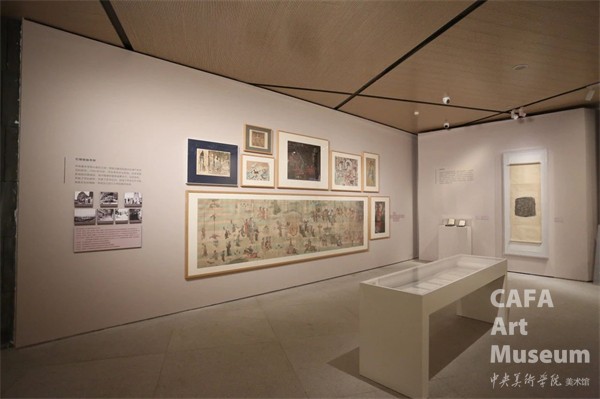

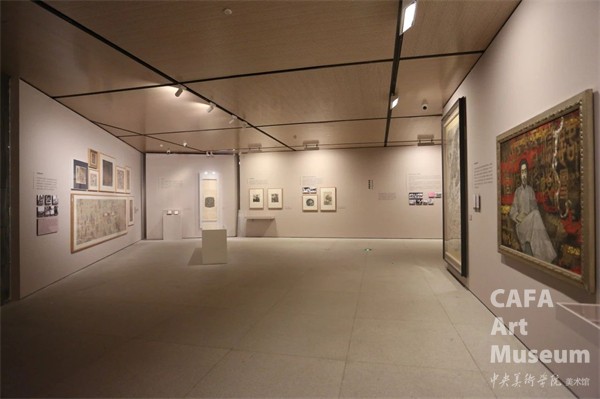
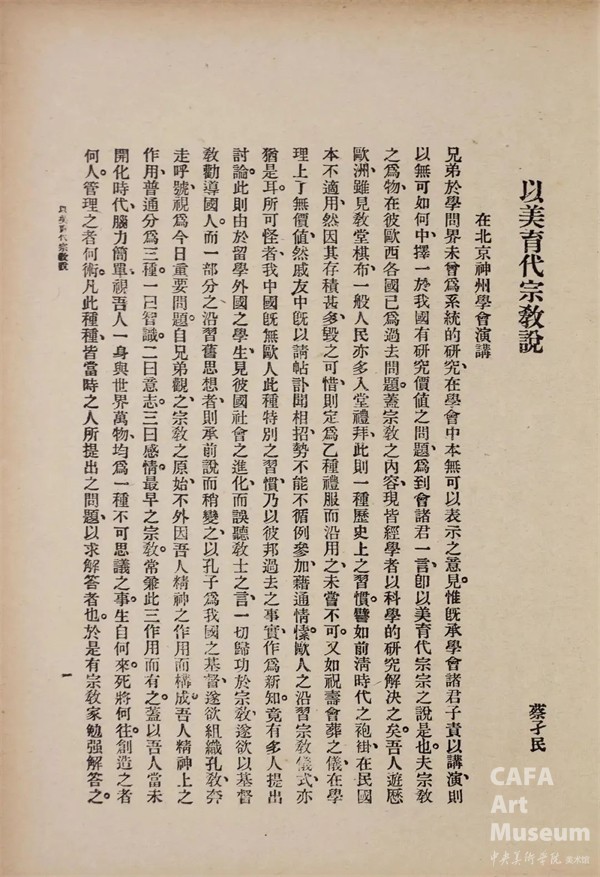

2023年8月30日,“弘扬中华美育精神——中央美术学院藏精品展”在中央美术学院美术馆2层B展厅如期呈现。
本次展览深入挖掘中央美术学院藏品背后的美育内涵,精选院藏一百余件时代经典作品和珍贵文献,首次以中国近代美育的发展历史为背景,爬梳文献,挖掘藏品背后的故事,呈现百年“美育”的发展脉络,梳理不同历史时期美育发展的重要面向和取得的成果,回望几代人“弘扬中华美育精神”的历史贡献。
本次展览内容推送将分为四篇发出,今天的推送将介绍展览的第一板块:美育启蒙——“美育代宗教”的思想,以及第二板块:整理国故——重新发现传统之美,回顾美育在中国的早期传播。
前言
2018年8月30日,习近平总书记给中央美术学院老教授回信强调加强美育工作很有必要,指出做好美育工作,要坚持立德树人,扎根时代生活,遵循美育特点,弘扬中华美育精神,让祖国青年一代身心都健康成长。
在习近平总书记给中央美术学院老教授回信五周年之际,我们精心策划了“弘扬中华美育精神——中央美术学院藏精品展”,以中国近代美育的发展历史为背景,结合各类重要藏品和文献,挖掘藏品背后的故事,呈现百年美育的发展脉络,梳理不同历史时期美育发展的重要方面和取得的成果。展览分为“美育启蒙”“整理国故”“艺术社会化”“表现大时代的艺术”“发展中国传统文化”“吸收外来文明”“服务社会生活中的美育”等七个板块,用百余件馆藏精品和大量历史文献,展现了近现代美育百年发展之路。
让我们以此致敬为美育事业不懈奋斗的前辈先贤!昭示建设中华民族现代文明新的文化使命对弘扬中华美育精神的呼唤!激励我们把更多更美好的新时代中华美育故事写在全面建成社会主义现代化国家的新征程上,写在人民群众幸福美好的生活中,写在美丽富饶的中华大地上!
中央美术学院党委书记 高洪
院长 林茂
第一版块
美育启蒙——“美育代宗教”的思想
“美育”概念的提出是在救国图存的大背景之下,是对于国民思想的启蒙。其核心是对中国艺术各个环节的全面改造,从文学到美术、从音乐到书法,从戏剧到摄影,先贤们所展开的不但是一种形式的创新,更是通过形式的创新再探索人的精神的更新。而这种更新从不同的角度指向了“国民”的概念。是一种新的美,更是一种新的教育,而新的教育产生出来的,是新的国民和崭新的国家。蔡元培所提出的“以美育代宗教说”则是早期美育思想启蒙的重要观点。
《新青年》(第三卷第六号)发表蔡元培文章《以美育代宗教说》,此为封面。
蔡元培《以美育代宗教说》原文
1.“美育代宗教”与新文化运动
20世纪初,列强环伺中国,中华民族面临危亡,一批有识之士面对时代巨变,认识到在各种救亡道路中,提倡美育的重要性。蔡元培提出的“美育救国”“以美育代宗教”成为先锋的思想,注重实现人的全面发展。由此,新文化运动以 “民主”“科学”为宗旨,开展了多方面的讨论,针对人的自由发展、情感教育,提出了一系列“美育”新主张,这个时期的一批著名的教育家又在大学教育和乡村教育中,大力推行“审美教育”。“美育”一时蔚成风气,社会影响巨大。
从左至右图注:
《新月》(1928年3月—1933年6月) 历任编辑有徐志摩、闻一多、饶孟侃、梁实秋、叶公超、潘光旦、罗隆基、胡适、邵洵美、余上沅等
《现代》施蛰存、杜衡、汪馥泉编辑 1932年5月至1935年5月 因现代书局关闭而停刊
《太阳月刊》太阳社编 1928年1月—1928年7月
《新潮》 北京大学新潮社编 1919年
《语丝》北京大学新潮社编 鲁迅等人发起 1924年—1930年3月10日
蔡元培侧面浮雕像 刘开渠 1986 年 32×24cm 石膏 中央美术学院美术馆藏
北京大学画法研究会是1918年由北京大学校长蔡元培发起成立的美术社团组织。此会的起点始于1917年12月1日。当时陈师曾应邀到北京大学作演说,嗣后蔡元培即布告发起此研究会,一时报名的人数达到五六十人。但画法研究会真正付诸实施的时间是三个月以后的1918年2月。由蔡元培作为发起人,由狄福鼎、陈邦济为临时干事,进行北京大学画法研究会的筹备工作,并随后拟定章程和导师。经过紧张筹备工作以后,于1918年4月正式开课。
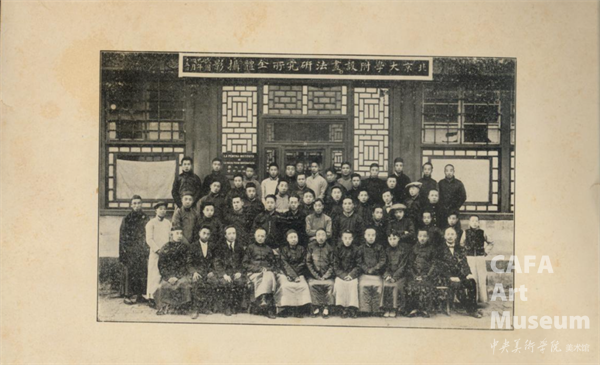
北京大学附设画法研究所全体摄影(1920年4月15日)

《绘学杂志》北京大学绘学杂志社编 1920年6月1日—1921 年11月 北京大学画法研究会的会刊
画法研究会成立后,积极扩大学员规模,组织演讲会、游艺会、展览会等各类活动,同时,也培养了一批艺术人才。其作为民国初期北京地区成立较早的美术社团,在传承画学、普及美育及增进艺术交流等方面都起到重要的作用。
2. 先驱李叔同与《美育》杂志
李叔同作为中国最早赴日本留学学习美术的留学生之一,是中国近代文化名人,也是倡导“美育”的先驱,他在绘画、音乐、戏剧、手工、广告等诸多方面进行了早期的美育实践活动,并影响了一大批学子。

1907年李叔同与曾孝谷(延年)组织话剧团体春柳社,在东京主演话剧《茶花女》剧照,李叔同在剧中饰演茶花女
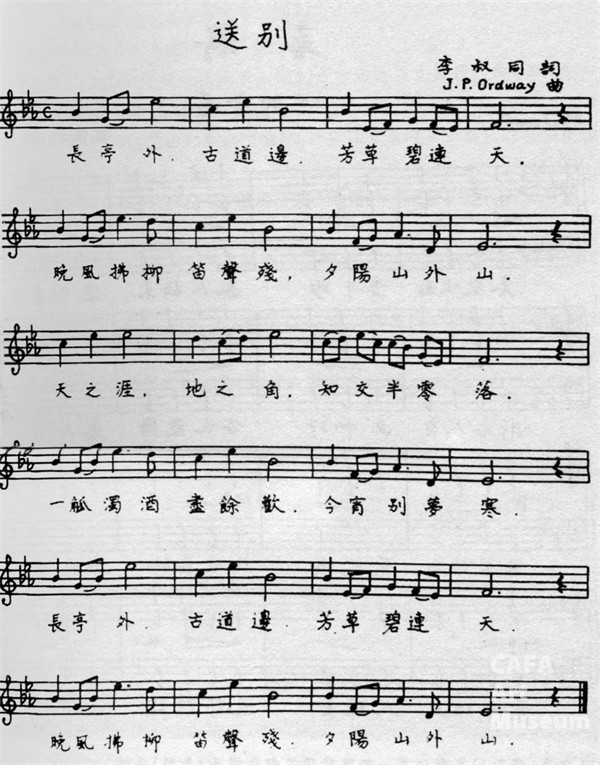
李叔同在浙江第一师范任教前期所作乐歌代表作《送别》乐谱
1919年成立的中国第一个美育组织“中华美育会”就是李叔同的同事及学生吴梦非、刘质平、李鸿梁、丰子恺、姜丹书、欧阳予倩等创办的。会刊《美育》杂志的第一期封面由李叔同题写,并在杂志第一篇刊登李叔同油画和李叔同先生小传。

《美育》第一期封面,“美育”两字为李叔同所书

《美育》 第一期目录,中华美育会1920年4月20日发行

《美育》第一期登载的“李叔同先生小传”

《女》(油画,上海专科师范学校藏)李叔同先生笔 发表于1920年4月20日发行的《美育》第一期

半裸女像 李叔同 约1909年 90.5×116cm布面油彩 中央美术学院美术馆藏
3. 北京美术学校与北京春季艺术大会
1918年4月,北京美术学校成立,代表了国家对美术教育重要地位的确立,蔡元培所倡导的美育有了专门的学校教育进行落实,是中国近代美育的新纪元。

《他校纪事中国第一国立美术学校之开学式》《北京大学日刊》 1918 年 第114期 3页

郑锦(1883-1959)北京美术学校首任校长
学校成立之后,立即在美育教育和社会美育中做出了很多有益的尝试。1927年春,林风眠执校期间倡导民众的艺术,倡导艺术到民间去,首次组织了影响深远的“北京艺术大会”,成为向社会推广美育的重要历史事件。

1927年北京艺术大会合影《晨报星期画报》1927年 第2卷 第85期

《海灯》1927年第1期北京春季艺术大会 特刊目录

林风眠为1927年北京国立艺术专门学校毕业学生写的祝辞

1927年 林风眠在北京艺术大会的留影

女半身像 林风眠 20世纪40年代 37×41cm 纸本设色 中央美术学院美术馆藏

品茗 林风眠 20世纪40年代 29.5×32cm 纸本设色 中央美术学院美术馆藏

风景之二—沿江村落 林风眠 20世纪40年代 33.5×34cm
纸本设色 中央美术学院美术馆藏
在林风眠的影响下,陆续出现了《亚波罗》《美育杂志》《艺风》等传播美育思想的刊物杂志。

《亚波罗》 浙江杭州西湖国立艺术院 1928年 中央美术学院图书馆藏

《艺风》艺风杂志社 嘤嘤书屋 1933年 中央美术学院图书馆藏

《美育杂志》 商务印书馆 1928年 中央美术学院图书馆藏
4. “中华教育改进社”美育组

1921年 实际教育调查社讨论会同人摄影(中华民国十年十二月二十日在北京美术学校)
1921年12月23日,新教育共进社、新教育杂志社、实际教育调查社三者合并成立中华教育改进社,蔡元培、范源濂等人为领导核心。以“调查教育实况,研究教育学术,力谋教育改进”为宗旨有效推动了中国新教育的研究与实践,有力地促进了中国教育科学化、民主化、现代化进程。中华教育改进社年会设有美育组,每次均有提案若干,很多提案在中国美育发展史上具有里程碑意义。

1922年中华教育改进社美育组主要成员合影,右二为蔡元培

第二版块
整理国故——重新发现传统之美
1919年12月,胡适在《新青年》第7卷第1号发表《新思潮的意义》,醒目地提出号召:“研究问题,输入学理,整理国故,再造文明。”整理国故,就是用新的思想和方法重新研究、理解和审定历史上的学术、思想和文化,用历史的眼光扩大国学研究的范围,用系统的整理来部署国学研究的资料,用比较的研究来帮助国学材料的整理和解释。在“整理国故”的理念倡导下,众多学者开展了一系列重要的探索,包括对中国历史、神话与民间文学、书法篆刻、美术史等领域的整理等,让传统文化绽放出与时代相适应的、新的强大生命力。
1. 搜集整理历史
基于对传统学术中崇雅鄙俗之旧习的反拨,在落实雅俗平等学术理念的过程中,为祛除国人心中根深蒂固的对民间文化的偏见,突显民间文化研究的意义和价值,整理国故运动在重估传统时将重心从庙堂转向民间,偏重于搜集、整理和研究民间文化传统,呈现出扬俗抑雅的治学取向。

《中国版画史图录》 郑振铎 上海良友复兴图书公司出版 1942年 中央美术学院图书馆藏
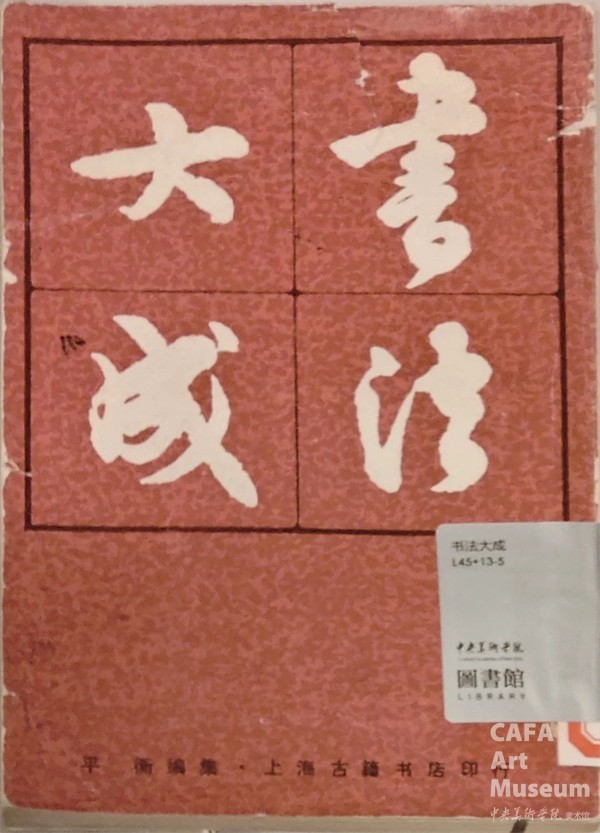
《书法大成》 平衡 上海古籍书店 1982年 中央美术学院图书馆藏

《五台山佛光寺记》(节选) 梁思成 《中国营造学社丛刊》 1937年

《高唐神女传说之分析》 闻一多 《清华学报》(第10卷 第4期) 1935年
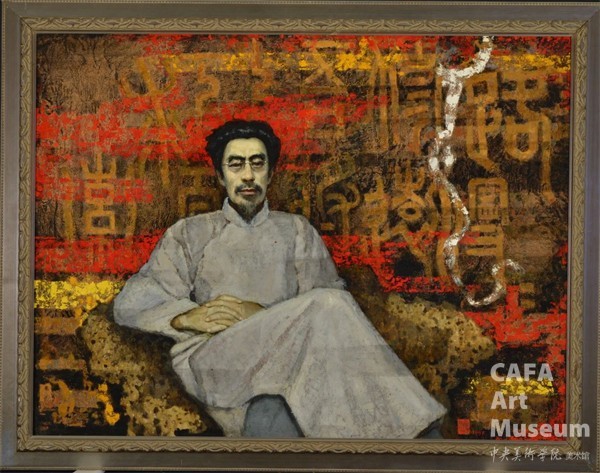
静夜 闻立鹏 1991年 布面油彩 132x162cm 中央美术学院美术馆藏
2.平民教育运动
平民教育运动是五四运动时期的新教育思潮和实践活动,试图通过提高平民的文化知识水平,来消灭不合理的社会现象。1923年6月,陶行知、朱其惠等人发起组织南京平民教育促进会,亲自编写《平民千字课》,热心下乡为农民识字扫盲服务。晏阳初在河北定县进行了长达11年的乡村平民教育实验。曾任北京美术学校校长的郑锦深度参与了其中的美术方面工作,并发表文章《平民教育运动与平民美术之提倡》。

《平民千字课》 陶行知、朱经农等编,商务印书馆印行

《平民教育运动与平民美术之提倡》 郑锦
《教育杂志》 1927 年 第19卷 第9期 1-6页

群英奋战 郑锦 1937年 122×240cm 纸本设色 中央美术学院美术馆藏
3.石窟壁画考察
1950年代初,中央美术学院对于祖国文化遗产极为重视,师生率先走出校园,走进祖国各地的石窟遗迹,进行勘察和壁画临摹学习,这些活动,开拓了师生眼界,丰富了艺术认识,加强了师生对于中国传统文化的认识,并成为之后几十年的教学传统。

1953年,由文化部组织的麦积山石窟艺术勘察团留影

1954年,中央美院暨华东分院组织的敦煌艺术考察队留影

1958年,中央美院中国画系学生临摹壁画

1959年,中央美院中国画系学生临摹壁画
据不完全统计,这方面的早期活动大致有:
1952年,吴作人、张仃、李可染、李瑞年、夏同光、萧淑芳等教师作为炳灵寺石窟勘察团成员,参加勘察临摹工作。
1953年,吴作人、常任侠、罗工柳、孙宗慰、萧淑芳、陆鸿年、戴泽等教师作为麦积山石窟勘察团成员,参加勘察临摹工作。
1954年,叶浅予、刘勃舒、詹建俊、汪志杰与华东分院(今中国美院)师生共11人组成敦煌文物考察组临摹壁画。
1957-1958年,陆鸿年、黄均、王定理等中央美院师生与华东分院师生受命临摹山西永乐宫壁画。两院师生34人以3个月共同临摹三清殿壁画。后由中央美院师生以两批26人次3个半月续摹纯阳殿、重阳殿、龙虎殿壁画。
1958年,中央美院油画系一年级学生到法海寺临摹壁画。
1960年,罗工柳率领中央美院油画研究班赴敦煌临摹壁画。
1962年,中央美院美术史系师生在刘凌沧指导下临摹法海寺壁画。
1964年,陆鸿年、王定理等师生赴新疆克孜尔石窟与库车地区石窟临摹壁画。

一佛二菩萨(炳灵寺) 张仃 1952年 29×37.5cm
铅笔淡彩 中央美术学院美术馆藏

第六龛一角(麦积山) 戴泽 1953年 38×55.5cm
水粉设色 中央美术学院美术馆藏
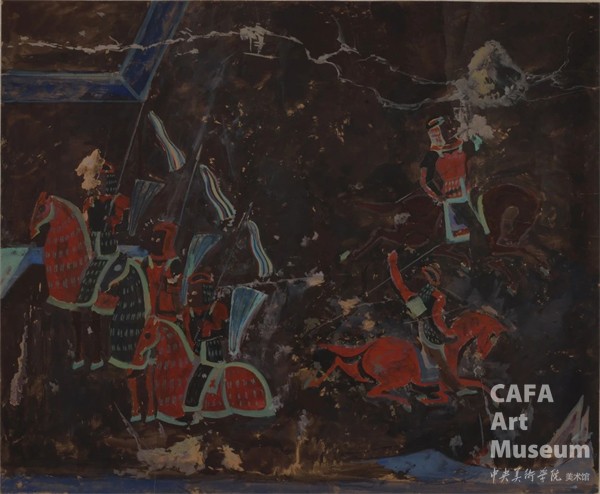
甲马(麦积山) 吴作人 1953年72×87cm
水粉设色 中央美术学院美术馆藏

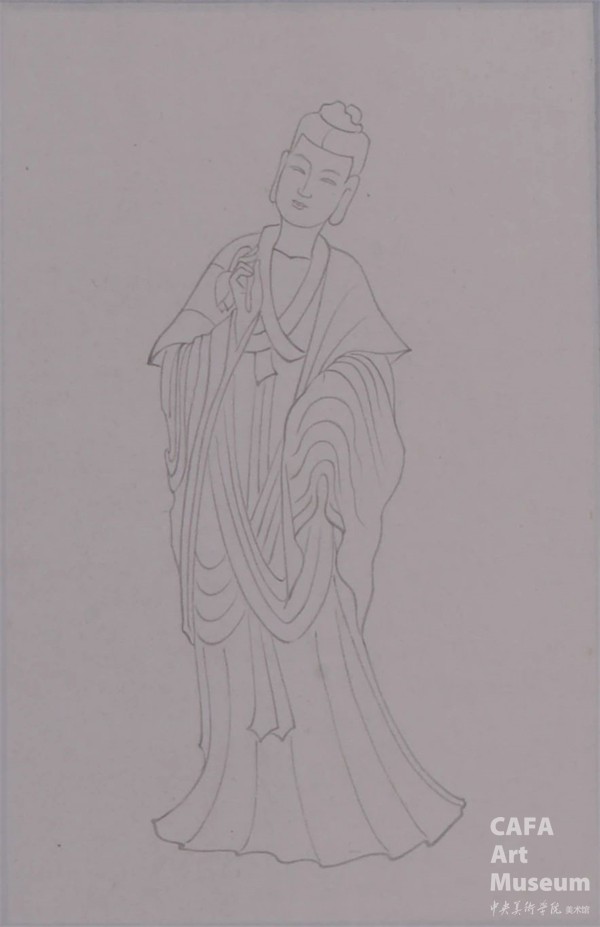
白描神佛 (麦积山)萧淑芳(薛永年题跋) 1953年 45.5×484cm
纸本设色 中央美术学院美术馆藏

临摹麦积山壁画 罗工柳 1953年32cm×48cm
纸本水粉 中央美术学院美术馆藏


宋国夫人出行图 (敦煌) 叶浅予 1954年 104×404cm
纸本设色 中央美术学院美术馆藏

龙王供养 (敦煌) 詹建俊1954年 60×80cm
纸本设色 中央美术学院美术馆藏
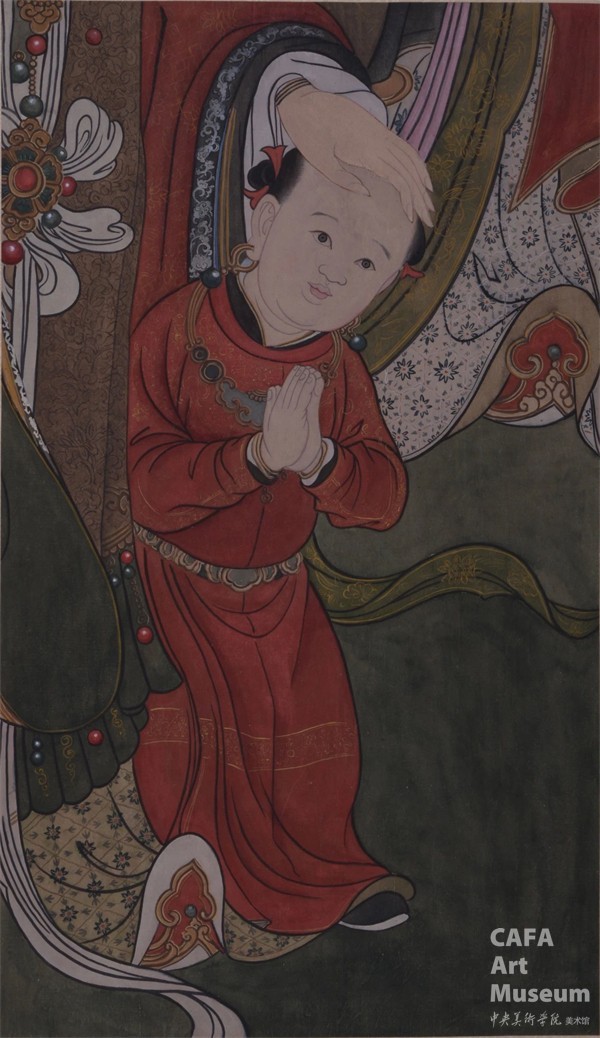
童子(法海寺) 翁乃强 1958年 77×44.5cm 纸本设色 中央美术学院美术馆藏

执笔仕女(永乐宫) 柏岩 1958年 68×40cm
纸本设色 中央美术学院美术馆藏
4.古物陈列所与中国历代书画的社会化
1914年,古物陈列所在故宫的武英殿成立,后接管文华殿、太和殿、中和殿、保和殿等紫禁城前朝部分,是我国第一座国立博物馆,主要保管清廷存放于盛京皇宫和热河行宫的文物,存有历代书画三千余幅。它在中国近代史上具有划时代的意义,对于书法、绘画、金石的研究作出了突出贡献。1937年,创设国画研究室,方便专业人士和美术学校学生研究国画。

1941年古物陈列所国画研究室

黄宾虹与钱桐、张大千、于非闇、福开森、周肇祥、徐世昌、江朝宗合影于故宫
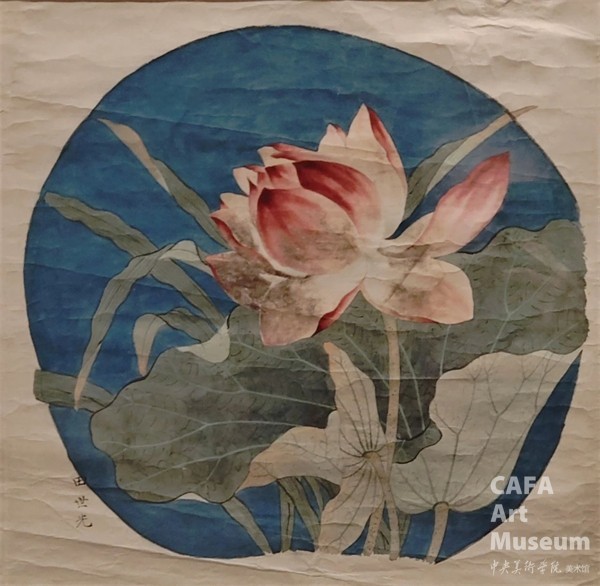
荷花 田世光 约1940年 33×33.5cm
纸本设色 中央美术学院美术馆藏

花卉 俞致贞 1940年 34×54cm
纸本设色 中央美术学院美术馆藏
5.碑刻拓印
拓印的产生源于碑刻书法的传播,汉唐以来碑碣盛行,多出自翰墨名家之手,为便于师法书家气象万千的珍贵字迹,拓片应运而生。后来金石学兴起,处于研究需要,青铜器的铭文与纹饰也被制作成拓片。清代金石学复兴,嘉庆、道光年间出现了复杂的青铜器全形拓法。到二十世纪之后也得到先贤的广泛重视。通过拓印保存了珍贵的历史信息,是中国传统文化的传承的重要助力之一。

散氏盘铭文(拓片) 许宝蘅 巢云簃藏 65×46cm 中央美术学院美术馆藏
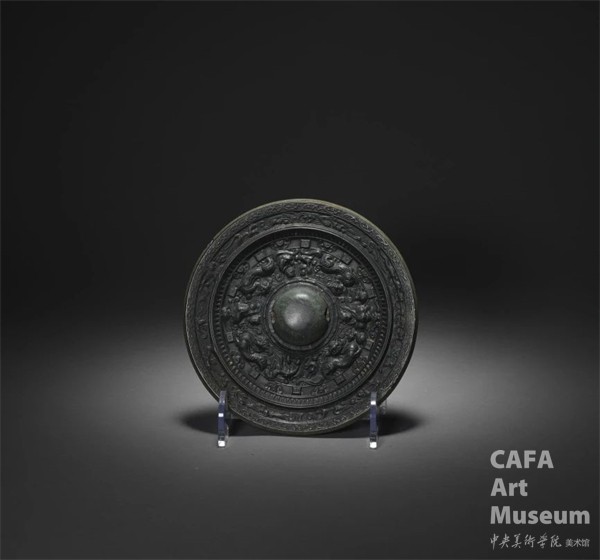
汉狩猎镜 铜 直径:14.6cm 厚:0.5cm 中央美术学院美术馆藏
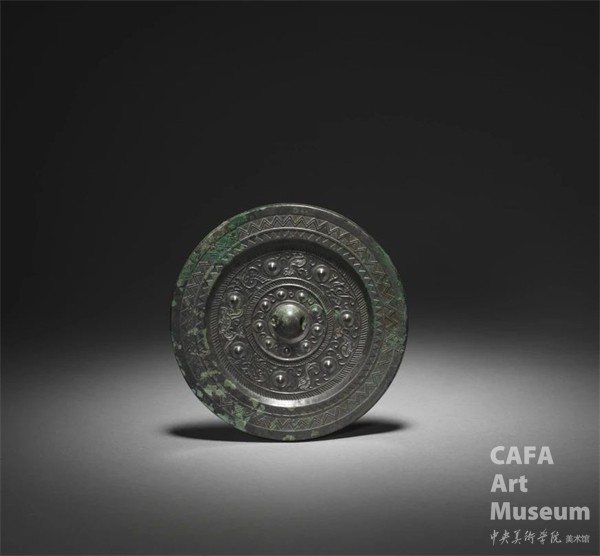
汉七乳鸟兽纹镜 铜 直径:11.8cm 厚:0.5cm 中央美术学院美术馆藏
6.民间图案搜集
20世纪20年代,许多学者试图寻找“新材料”、运用“新方法”来建构描述国族历史所需的语言、历史、考古与民族文化知识,以“科学方法”实践国族认同。民族学得到关注,对于民族的研究,尤其是少数民族的历史、艺术传统的研究成为一项重要的历史任务,民间的各种优秀艺术传统逐渐进入研究者的视野。

《图案问题的研究》 庞薰琹 大东书局 1953年

苗装 庞薰琹 约1940年代 32.1×29.7cm 纸本设色 中央美术学院人文学院藏
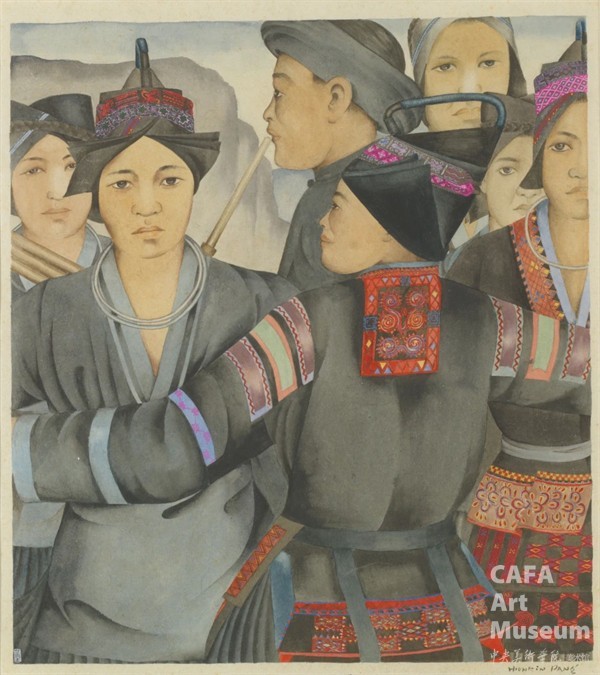
苗族之舞 庞薰琹 约1940年代 34.5X29.8cm 纸本设色 中央美术学院人文学院藏
此次展览相关的后续内容推送
将于近日陆续发出
敬请期待

展览策划与工作组
总顾问:高 洪
学术主持:林 茂
总策展人:邱志杰
展览总监:张子康 韩文超
展览统筹:王春辰 高 高
执行策展人:李垚辰
设计总监:纪玉洁
设计协理:闵志伊 唐美晨
藏品管理:王春玲 崔然然 徐 研 窦天炜 梅 琦 姜 楠 西华伟
展览助理:李佳蒙
展览管理:吴 鹏 宿世存 荆 鹏 马 亮
媒体宣传:何一沙 吴 靖 贺伊飞
官网文宣:王 静
智识中心:肖宝珍
公共教育:任 蕊 姚轶群 梁 雯 王 军
财经事务:杨 柳 门 婧 寇 蕾
行政支持:蒋思妤 岳君瑶 张 倩 郭 旭
后勤安保:孙 炜 陈小华 吕智发
